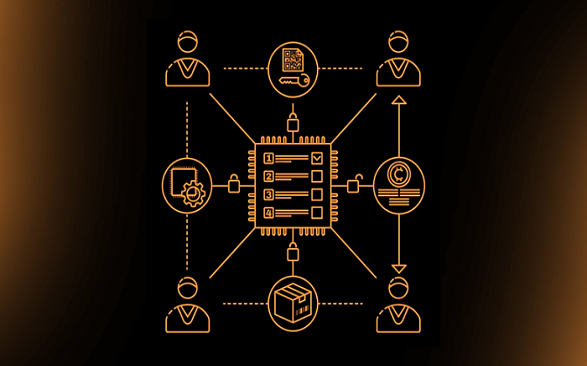Following the emergence of bitcoin (BTC) in 2008 courtesy of Satoshi Nakamoto, numerous cryptoassets have been introduced to the crypto market. At the time of writing, multiple data sources show there are over 20,000 cryptocurrencies in existence with more expected to be launched as the nascent industry continues to develop.
Cryptoassets are classified based on their design, functions and/or use cases. Accordingly, there are stablecoins, privacy coins, utility tokens, memecoins, shitcoins, and scam coins amongst others. Given the growing influx of shitcoins and scam coins primarily because of the lack of crypto regulations, this article discusses how they work, their risks, similarities, and differences.
Interestingly, when disgruntled investors have been hurt by a shitcoin, they are often quick to accuse the founders of scamming them. This is where the thin line between a shitcoin and a scam coin may become completely blurred. In such scenario, it will be extremely difficult—if not impossible—to prove otherwise.
What are shitcoins?
On the one hand, “shitcoins” is a slang term in the crypto industry used to describe cryptocurrencies with little to no value or credibility. Simply put, these are cryptoassets considered low-quality, unreliable, lacking genuine value or use cases, and solely dependent on hype for growth.
However, on the other hand, the term “shitcoins” is subjective as some crypto investors may use it to express skepticism about the viability of certain cryptocurrencies.
Practically, some consider any cryptocurrency outside of well-established ones such as BTC or Ether (ETH) as “shitcoins,” while others use it specifically for cryptocurrencies with zero use cases, bad tokenomics, poor fundamentals etc.
Therefore, shitcoins are often associated with pump-and-dump schemes, lack of utility, or uncertain development plans. Other factors contributing to a cryptocurrency being labeled a “shitcoin” may include a lack of transparency, low trading volume, susceptibility to price manipulation, anonymous creators, low liquidity, and absence of practical use cases.
What are scam coins?
As the name suggests, scam coins are fraudulent cryptocurrencies created to exploit inexperienced crypto investors or traders. Scam coins are often associated with various schemes aimed at stealing funds or manipulating markets.
Created for deceitful purposes, these crypto projects often make false promises to lure buyers, have anonymous or unverifiable development teams, lack transparency, and may be associated with schemes such as pump-and-dump and rugpulls.
Read also: Top 6 Hacks on How To Avoid Losses in Crypto Trading
Are scam coins and shitcoins good investments?
Yes, some shitcoins indeed may experience 10x, 20x, or even above 1000x price increase within a short period. This often occurs at the early stage of the projects where there is superfluous hype from the community and influencers. Because they tend to decline sharply in price too, some smart traders often dump their shitcoins at the sight of long green candles to avoid being bag holders.
Nonetheless, it’s crucial to ask some critical questions before accumulating shitcoins. First, how long before the hype cools off? What is the project roadmap? What real value or use case does the project offer? How good is the cryptoasset’s tokenomics? Who are the brains behind the project? The list continues.
The answer to these and many more questions can help an investor ascertain the long-term viability of any cryptoasset. In other words, investing in cryptocurrencies—not just shitcoins and scam coins—without due diligence could lead to permanent losses. Meaning, adequate research helps you ascertain whether a particular cryptoasset is a good or bad investment choice.
Read also: What is Tokenomics and Why Does It Matter to Crypto Investors?
Scam coins vs Shitcoins: Similarities and differences
There are several resemblances and disparities between both categories of cryptoassets.
Similarities
Some of their similarities include the following:
- Both scam coins and shitcoins are characterized by a lack of transparency as most creators often stay anonymous.
- Both are threats to the crypto industry as they usually cause market participants to incur losses, thereby hindering crypto mass adoption.
- These crypto projects have unreliable development teams, showcasing zero sustainability.
- Shitcoins and scam coins are often targets for pump-and-dump schemes, where their prices are artificially inflated and then rapidly sold off, leaving investors with huge losses.
- They often lack clear use cases or real value, contributing to doubts about their long-term viability.
Differences
Amid their similarities, notable differences exist between shitcoins and scam coins as discussed below:
- Developers of scam coins often make false promises of high returns or unique features to attract investors. Developers of shitcoins do not make false promises.
- Scam cryptocurrencies are intentionally created with fraudulent purposes, aiming to deceive investors and users for personal gain. While risky, not all shitcoins are necessarily designed to scam investors.
- Scam coins tend to have a deliberate lack of transparency with anonymous or false development teams and hidden agendas. In contrast, shitcoins may lack transparency but it’s not always intentional deception. Some may simply have weak fundamentals or poor development efforts.
- Scam coins deliberately lack real and sustainable value or utility primarily due to deceptive and fictitious products and platforms. They are built to fail. However, shitcoins may lack real and sustainable value or utility but this is typically due to poor product development, poor product market fit, weak team, poor execution, or even lack of a properly thought-out roadmap. Losses incurred from buying or holding shitcoins may therefore result from misguided, premature, or weak attempts at creating a legitimate cryptocurrency.
Conclusion
Both scam coins and shitcoins are highly volatile assets. Scam coins are generally made out of “thin air”, and investor funds almost always end up the same way. Total loss with little or no hope of asset recovery. In the same vein, shitcoins may pump initially resulting in huge profit for investors, but they are fundamentally weak and hardly sustainable. Trust and confidence in them is often quickly eroded, consequently resulting in dumps.
No doubt the lack of proper crypto regulations has led to an influx of several shitcoins and scam coins into the crypto market. While crypto regulation is still taking shape in various countries across the world today, it is vital that market participants learn how to detect and identify scam coins and shitcoins. Also, shitcoin zealots should also learn to make informed decisions about the cryptocurrencies they wish to invest in.
Read also: Top 4 Safety Tips in Crypto Investment You Should Know
Credit: Ndianabasi Tom
A crypto journalist and content writer who has been talking about cryptocurrency and blockchain technology since 2018, Ndianabasi is a Writer at Crypto Asset Buyer (CAB).Discover more from Crypto Asset Buyer
Subscribe to get the latest posts sent to your email.




